C.S.M. Ernest William Fereday
Army Service No. 5334942
ERNEST WILLIAM FEREDAY
28TH MARCH 1916 - 24TH OCTOBER 1995
[LS18-1] On the left I was dressed in
Blue Patrol, that was the name of the uniform. It was a walking-out dress.
Much more pleasant and comfortable to wear than the Khaki Serge and putties!
Under my arm I am carrying a swagger cane. That was taken in the back
garden of... St. German Street, Huntingdon. I think my foster mother is
in the background putting the washing on the line. I had cycled there
from Oxford, quite an achievement for me I think!
The photograph middle top [LS18-4] is a Carden Lloyd Platoon of No. 4
Platoon. Well that is Carden Lloyd. A machine gun carrier and it is called
a ~Thomas Carden Lloyd~ to give it full name as he was the inventor. It
was driven by a T Ford Engine which was quite popular then in vans and
cars. Track driven obviously! The driving sprockets were at the front.
The driving mechanism itself to drive is exactly the same as the old model
~T~ Ford. It was a machine gun carrier vehicle; it's very slow but gave
an incredible performance across country.
Lower middle shows a Carden Lloyd again with a group of the crew. I took
this photograph so am not in it! I cannot remember their names, it is
too far back, but they were the lads who formed a particular section at
that time.
I myself, 3 of us actually, went to Lyde not very far from Folkestone.
We were on a course with the Royal Tank Regiment. We were given a good
grounding knowledge, theory and practical of vehicles. I did very well
on that and remained on the mechanical side ever afterwards.
Bottom right, [LS18-5] is me in ~fatigue~ dress (working dress), I was
in camp at the time. I had got into a spot of trouble and given ~C.B.
~ which is confined to barracks. Seeing as we were in camp at the time
it was a bit silly but it meant loss of privileges. As soon as you had
finished the days duties you would have to report to the Guard Room at
certain times, (a tent when we were at camp), they blew a bugle and we
would have to form up and be inspected. Then be sent on fatigues, cleaning,
sweeping and washing up in the cookhouse. You name it; they had a job
for you. That is what I was on - punishment duties. As usual I was a bit
late, dashed into the tent to was my hands as they would be inspected
to, put my hand into my kit bag to get the soap and there was a loose
razorblade in there and I gashed my fingers on my left hand, right across.
With blood gushing out all over the place I went to the First Aid Tent
and had 5 stitches put in, no aesthetic in those days no local at all.
The Medical Officer was away, it was just the Orderly there, and he used
a curved needle, threaded it, and washed the wounds with some cauterising
stuff that hurt like hell. Now I am on light duties and apart from the
pain and discomfort I am very lucky.
Top left photograph is Ralph Storey, he is an Irishman and in civilians
there. The oval photograph is Willy Cavanagh also Irish, the chap standing
in the tent flap is McCleen and also Irish. That was the funny part about
the Royal Berkshire Regiment at that particular time because it comprised
of mainly Irishmen, Scotsman, Welshman and Londoners. There were very
few Berkshire men in it. A real cosmopolitan crowd!
On the right [LS20-4] that is me leaning on the wing, looking tired and
pretending to be asleep, in the centre that is little Titch Shilton, tiny
little chap. I will tell you a story about that in a moment. Next to him
is a chap called Verwood a Cockney. Photograph middle left, [LS20-5] this
is a general view of the camp taken on manoeuvres (training exercise)
in Saxmundham, Suffolk. The bell tents, that was what they were called,
in use since the South African War (same design) were designed to hold
21 men. For each panel in the tent one man had to sleep. At least that
is what was supposed to happen during the 1914-18 war. Around the centre
pole was what they called 'The Spider' made of very strong webbing. All
the rifles were grouped together in that webbing - all 21 of them. With
21 bodies sleeping in that tent you can imagine what it was like. But
in our time we had about 12 chaps in there, which made life a little more
acceptable.
When we went to camp, an advanced party would go and put all the pegs
in and lay all the tents out and on the bugle call the tents would be
raised and all the guide ropes tightened. In a matter of two or three
minutes the whole camp, which could take 700 soldiers, was raised.
In the centre is the west end of the dining hall and the cookhouse and
if you look closely you can see the field kitchens that we used to use
when we went out on manoeuvres. They were horse drawn at that time; we
were only just beginning with our mechanical transport. A lot of horses
had been sold or put down. Eventually the cookers were modified or scrapped
and we were issued with petrol pressure cookers and carried them in the
trucks.
Next to that is my first effort of a close up, that was Coacker, I shall
always remember his name as it's so unusual. Bottom row on the left there
is a group of us, again the old M.T. Section, the original section. Two
of these chaps there on the far left, Joe Slater and on the far right
Fred Brown. All of them there were trained by me because myself and O'Mara
were, I think I've mentioned before, were the only two private soldiers
that could drive in the whole battalion. This is rather incredible in
this day and age. We were sent on courses and became instructors, eventually,
and were responsible for training these men. The two chaps I've just mentioned
are still alive today - 1982 - and at the last Old Comrades Association
Meeting I met them both, I think all in all I met 6 of the originals from
the 1st Battalion that was all that was left. Bottom centre, looking out
of the window one of our chaps, he was the M.T. clerical staff and that
office was the MT office. We were in there one day and the M.T.O. and
T. Sergeant and myself, a Lance Corporal at the time, discussing something
or other and one of us glanced out of the window and said 'Good God, that
truck is running back on it's own'. We all dashed outside to stop it but
it wasn't running back at all, it was driven by Little Titch who I spoke
about just now. He was so small that when he was inside the truck driving,
you couldn't see him!
[LS24-2] These photographs are of the Aldershot Tattoo, but there are
gaps where no photographs were available. These deal with a later period
when our Battalion was chosen to take part in the Aldershot Tattoo which
took place at Rushmore Arena and there has never been a Tattoo held since
to match it. It was a magnificent job. Alright for the people watching
but not much fun for the people taking part! It was very hard work but
we enjoyed it. I feature in most of these photographs but I cannot easily
be identified. I know where I am as I can remember who was in front and
behind me. The whole of these pages are from that Tattoo. On page 12,
top right there is a picture of me in a Tattoo uniform and another Irishman
whose name was McAllister. These pictures of the Aldershot Tattoo cannot
be dismissed too lightly because it involves many weeks training beforehand
about eight weeks drilling with one old fashioned musket. They did things
properly, those muskets were used in those years of warfare and we used
the proper drill, in fact, for loading one of those muskets there is 32
different drill movements and we had to learn all those before we went
to Aldershot and fixing bayonets. All very different to our, then what
was the modern rifle 303 Lee Enfield rifle and we practiced day after
day.
[LS26-1] The plumes on the hats, feathery sort of thing on wire but looked
very effective from a distance, were different colours for each company
- blue, red, white and blue etc. When we got into position for firing,
we actually fired blank cartridges, there was quite a blast and the front
rank was told to Kneel, Present and Fire, second rank - Present and fire,
third rank - Present and Fire. Of course there was always the chap with
a sense of mischief and would aim at the plume on the helmet of the chap
in front of him. The blast from the blank cartridge would blow the entire
plume off of the piece of wire. This caused trouble of course and the
R.S.M. and Sergeant would say 'Any man found blasting plumes would be
put on a charge'. It still went on under cover of darkness, so they wouldn't
be seen anyway.
[LS26-2] This is another story - When we stormed the stockades you can
see them in these photographs, you would have to climb ladders with rifle
in one hand, fixed bayonets mind sharp pointed ones too. There were quite
a few stories about N.C.O.'s that weren't very well liked, under the cover
of darkness of course, that would get a sharp jab in the backside from
the bayonet!
The Aldershot Tattoo would go on until after midnight and then we would
have to go about three miles back to our camp. We usually had a bagpipe
band to help us on our way from Rushmore Arena back to the camp. When
we arrived we would get a mug of hot cocoa and a couple of biscuits and
then we would turn in. On some occasions when things had gone wrong and
they hadn't got the cocoa ready, we would be hanging about there, sometimes
it was raining and we were wet, cold and miserable. We would start singing
'Why are we waiting' much to Cook Sergeants disgust. We would eventually
get our cocoa and biscuits.
The uniforms had to be cleaned before every performance first thing in
the morning after roll-call parades, even the muskets had to be cleaned
too. They inspected right down to the last nut and bolt. You were put
on a charge if they found any fault.
The uniforms were made of cheap cotton materials of the time (mid 1930's)
yet stronger and more durable than many of those bought to-day (1983).
The design was the exact replica of the original uniform worn by my regiment's
ancestral unit (49th FT Regiment) at the time of the actual battles shown.
Every effort was made to get correct factual detail. The 'dead' 'dying'
and wounded were detailed off before every show. The Platoon Sergeants
would see to it that the numbers were not exceeded otherwise too many
troops would decide to 'die' and lay in comfort on the ground and watch
the show go on.
Twice my Battalion was detailed to take part in the Tattoo; I took only
in the first one as after that I was on several courses. There has never
been anything to touch those Tattoos since. The 'Edinburgh Tattoo' is
just a side show in comparison in my opinion. The next Tattoo that was
anything worth while was the 'The Tidworth Tattoo'. Even that was nothing
compared to the original Aldershot Tattoo. It was a great pity that wasn't
revived.
P 1 :: P
2 :: P 3 :: P
4 :: P 5 :: P
6 :: P 7 :: P
8 :: P 9 :: P
10
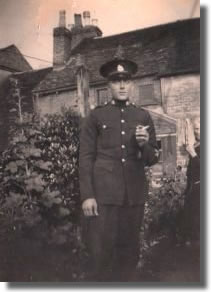 LS18-1
LS18-1
 LS18-4
LS18-4
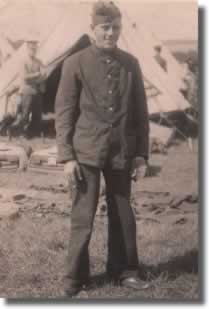
LS18-5
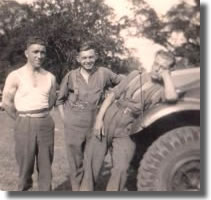 LS20-4
LS20-4
 LS20-5
LS20-5
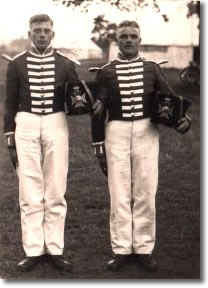
LS24-2
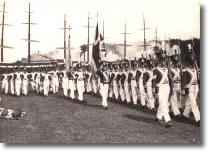
LS24-1
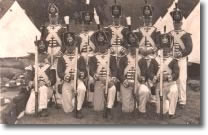
LS26-1
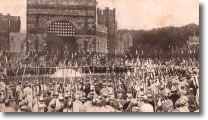
LS26-2
